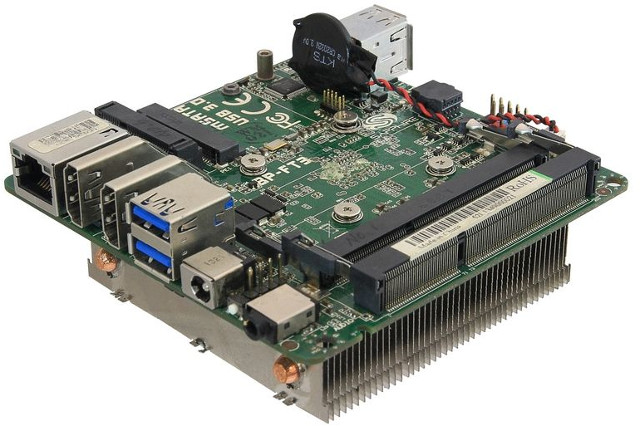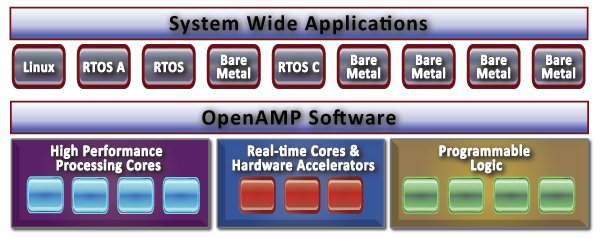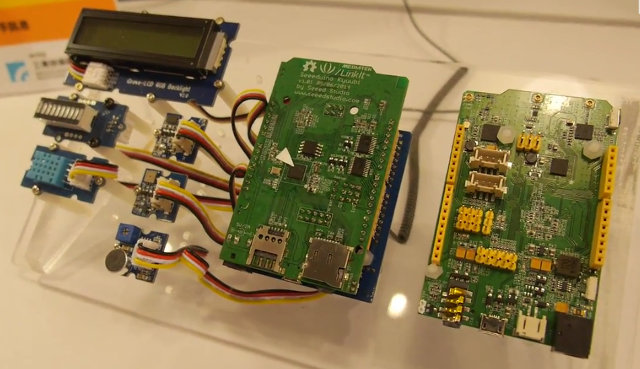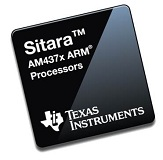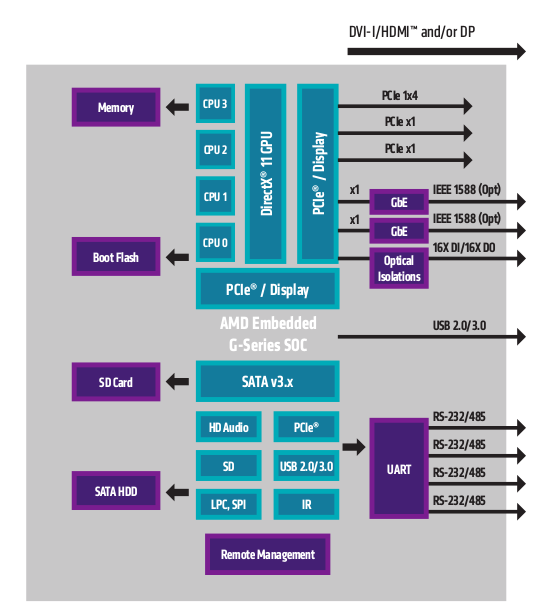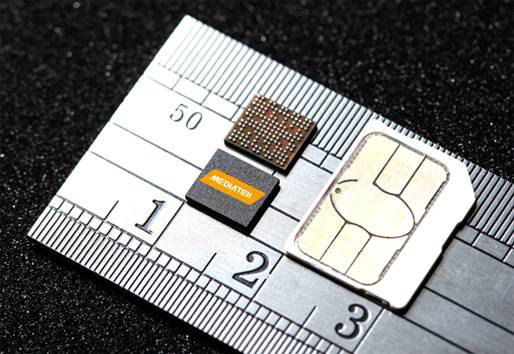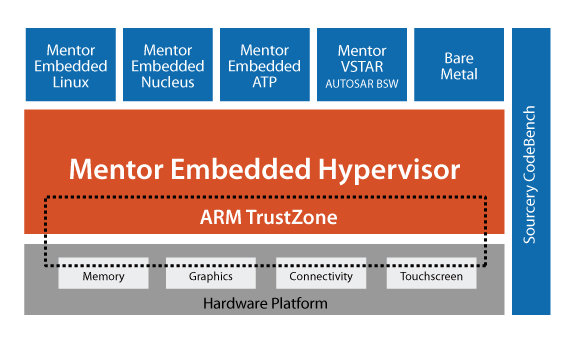Mentor Embedded will regularly organize webinars to show how to use or leverage their embedded Linux distribution, but their latest upcoming webinar entitled “Deploying Embedded Linux on an AMD LX-based sub-$100 Sapphire LX210 board” caught my eyes simply because there aren’t that many low cost AMD boards. The only ones I can think of are Gizmo 2 board sold for $200, as well as some PC Engines boards starting at $106 and mainly designed for headless applications. It took me several attempts on DuckDuckGo and Google, before finding Sapphire LX 210 product page. It’s even unclear how the board is called, as the company refers to it as BP-LX210KL at times, and BP-FT3bGS or BP-210KL in other instances. Preliminary specifications: SoC – AMD G-series LX210 dual core processor with Radeon GPU supporting DirectX 11.1, OpenGL 4.2 and OpenCL.2 manufactured using 28nm process technology System Memory – 2x DDR3 SO-DIMM up to […]
Embedded Linux Conference & OpenIoT Summit 2017 Schedule
The Embedded Linux Conference 2017 and the OpenIoT Summit 2017 will take place earlier than last year, on February 20 – 23, 2017 in Portland, Oregon, USA. This will be the 12th year for ELC, where kernel & system developers, userspace developers, and product vendors meet and collaborate. The schedule has been posted on the Linux Foundation website, and whether you’re going to attend or not, it’s always informative to check out the topics. So as usual, I’ll make a virtual schedule for all 5 days. Monday, February 20 For the first day, the selection is easy, as choices are limited, and the official first day it actually on Tuesday. You can either attend a full-day paid training sessions entitled “Building A Low Powered Smart Appliance Workshop“, and the only session that day: 14:30 – 15:20 – Over-the-air (OTA) Software Updates without Downtime or Service Disruption, by Alfred Bratterud, IncludeOS […]
OpenAMP Open Source Framework Provides the Glue between Linux, RTOS, and Bare Metal Apps in Heterogeneous SoCs
SoCs becoming more complex, and go beyond homogeneous multicore systems by mixing different type of cores such as high performance cores, low power real-time cores, or even FPGA fabric. Examples include NXP i.MX6 SoloX with an ARM Cortex A9 core for Linux apps, and an ARM Cortex M4 core for real-time tasks, or Xilinx Zynq UltraScale+ MPSoC with Cortex A53 core for higher level apps, Cortex R5 cores for real-time processing, and Ultrascale FPGA logic. All these different cores are running their own Linux based OS, real-time operating system or bare metal application, and all this makes software development an even greater difficult tasks. In order to reduce the complexity, and address some of the issues, the Multicore Association has launched a new working group targeting the management, expansion, and standardization of OpenAMP (Open Asymmetric Multi Processing), an open source framework that allows operating systems to interact within a broad […]
More Details on Mediatek MT2502 Aster SoC and Linkit Platform for Wearables (Video)
Last month, Mediatek announced their Mediatek MT2502 SoC for wearables, codenamed Aster, as well as the Linkit development platform targeting the developer’s community. But at the time they did show the actual hardware, and thanks to Charbax we know have more interesting details about Aster and Linkit. First they compare a design based on Aster to Samsung Galaxy Fit wearable band, and show why it uses less space, will cost less, and they claim over twice the battery life. Simple and smaller design (~36% reduction in size) Aster solution – MT2504 (6.2 x 5.4 mm) plus all required resistors, capacitors and inductors require 89.97 mm2 Galaxy Fit – MCU. Bluetooth Transceiver, external memory, a linear charger, and all required resistors, capacitors and inductors require 140.97 mm2 Battery life – Samsung Galaxy Fit is supposed to last between 1 and 1.5 days on a charge, whereas devices based on Aster should last about […]
Texas Instruments Announces Sitara AM437x Cortex A9 SoCs and Evaluation Modules
The first time I heard about Texas Instruments Sitara AM437x was via a TechNexion EDM-CT-AM437x system-on-module back in 2012, but Texas Instruments Sitara Cortex A9 processors development seems to have dragged a little longer than expected. Nevertheless, the company has now formally announced their Sitara AM437x ARM Cortex A9 SoC targeting automation, IoT gateways, and other industrial applications, and featuring four PRUs (Programmable Real-time Units), and support for dual camera for terminals with bar code scanning. At launch there will be four AM437xprocessors: AM4376, AM4377, AM4378, and AM4379. The processors will all be based on a single Cortex A9 core @ 800 to 1000 MHz with 64KB SRAM shared with 32KB data cache and 32KB programmable cache, 256 KB L2 and L3 caches, a 32-bit memory interface supporting LPDDR2, DDR3, and DDR3L, a 2-port Gigabit Ethernet switch , two USB 2.0 OTG + PHY and the following other interfaces: Serial Ports […]
AMD Introduces Embedded G-Series “Steppe Eagle” SoCs and “Crowned Eagle” CPUs
AMD has added six new members to is Embedded G-Series family with “Steppe Eagle” SoCs comprising a CPU, GPU and I/O in a single chip, and “Crowned Eagle” CPUs that are not actually CPUs in the old sense, but SoCs comprised of a CPU and I/O chipset, and all of them also include AMD’s ARM based PSP (Platform Security Processor) built upon ARM TrustZone architecture. You may also remember AMD G-Series APUs which are comprised of a CPU and GPU, and connected to an external I/O chipset, but none of these were announced today. The six new AMD G-Series processors are as follows: “Steppe Eagle” SoCs: GX-424CC – Quad core @ 2.4 GHz with 2MB L2 cache, and a GPU @ 497MHz. DDR3-1866 support. TDP: 25W GX-412HC – Quad core @ 1.2 GHz with 2MB L2 cache, ad a GPU @ 300MHz. DDR3-1333 support. TDP: 7W GX-212JC – Dual core @ 1.2 GHz […]
MediaTek Unveils LinkIt Platform with MT2502 Aster SoC for Wearables and IoT Applications
After Ineda Systems Dhanush SoC and SHASTRA Devkit, here’s another Wearable SoC and development kit for today with Mediatek announcement of their LinkIt platform providing both hardware and software to develop wearables and IoT applications using their Aster SoC for wearables. Key features of LinkIt platform listed on Mediatek Labs: MediaTek Aster (MT2502) measures only 5.4 x 6.2mm and is specifically designed for wearable devices Developer platform supported by reference designs that enable creation of various form factors, functionalities and internet connected services Synergies between microprocessor unit and communication modules, facilitating development and saving time in new device creation Modularity in software architecture provides developers with high degree of flexibility Supports over-the-air (OTA) updates for apps, algorithms and drivers Plug-in software development kit (SDK) for Arduino and VisualStudio; planned (Q4 2014) support for Eclipse Hardware Development Kit (HDK) based on LinkIt board by third party No details have been provided for […]
Mentor Embedded ARM Hypervisor Automotive Demo on Freescale i.MX6 Board
Virtual machines are usually run on server or desktop PC to run several operating systems simultaneous. About 2 years ago, I wrote about an embedded hypervisor running Linux and Android on the Pandaboard develompent board, with the goal of separating home and enterprise operating systems in mobile devices so that enterprise data is safe. Since then, virtualization extensions are now part of ARM Cortex A15 / A7, and as well as the new Cortex A53 / A57 ARMv8 64-bit cores, but in my mind at least, those where mostly designed to address the server market. It turns out hypervisors are also useful in the automotive field, where for example, the dashboard and In-vehicle infotainment (IVI) systems runs in two separate virtual machines controlling two different displays from one processor. Mentor Embedded showcased such automotive system at ARM Techcon 2013, where they showed a Freescale i.MX6 quad core board, which looks […]


